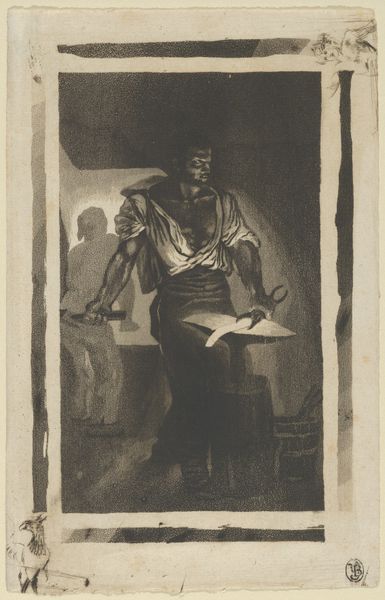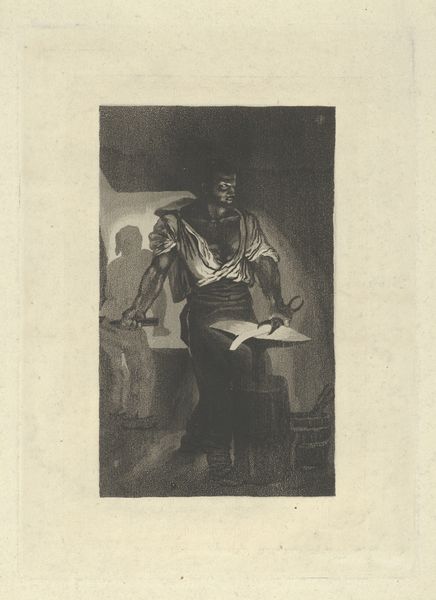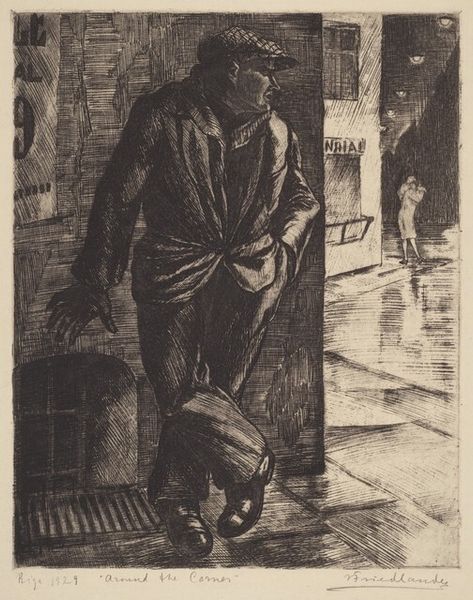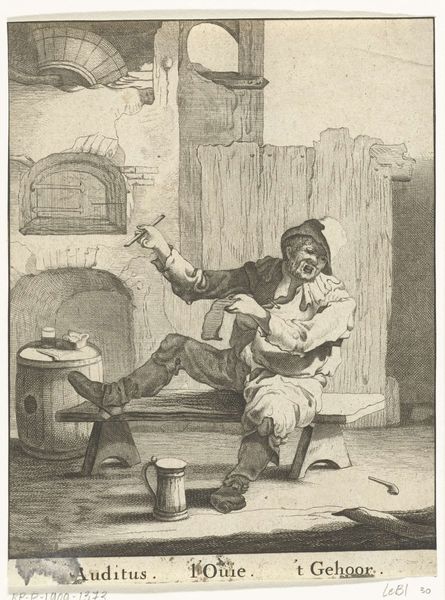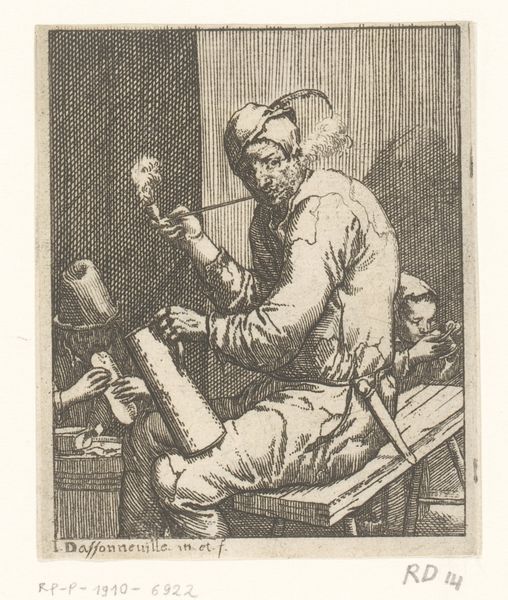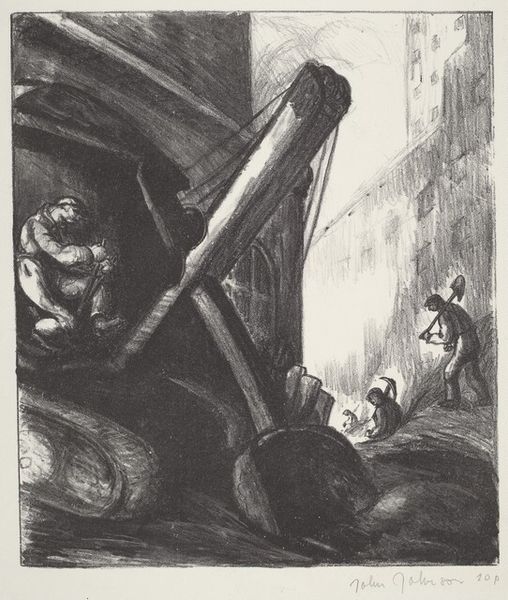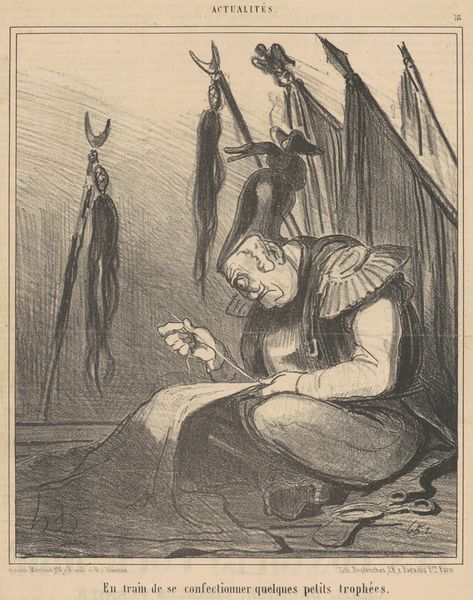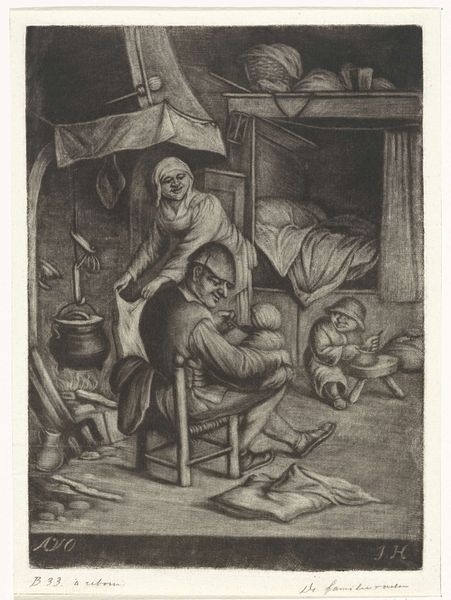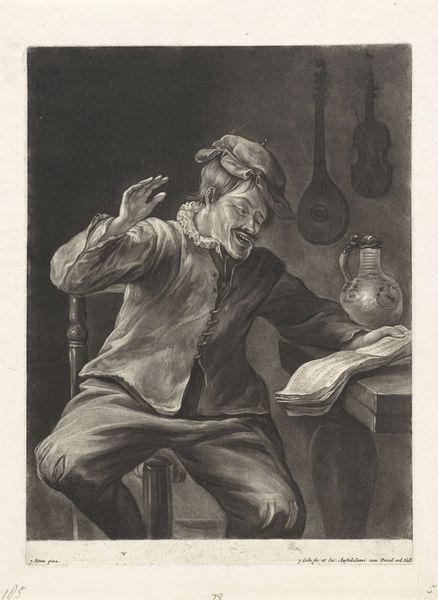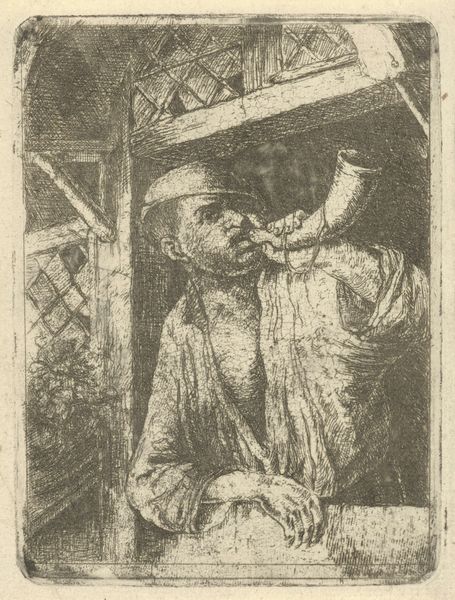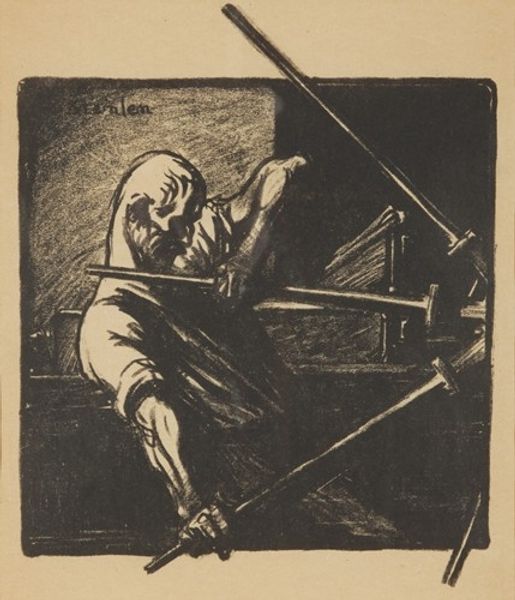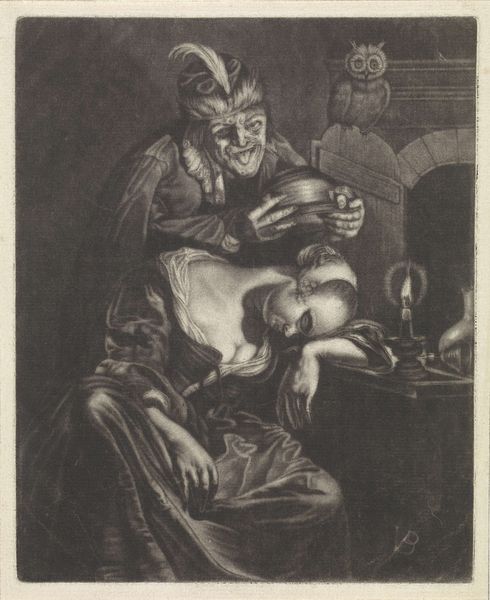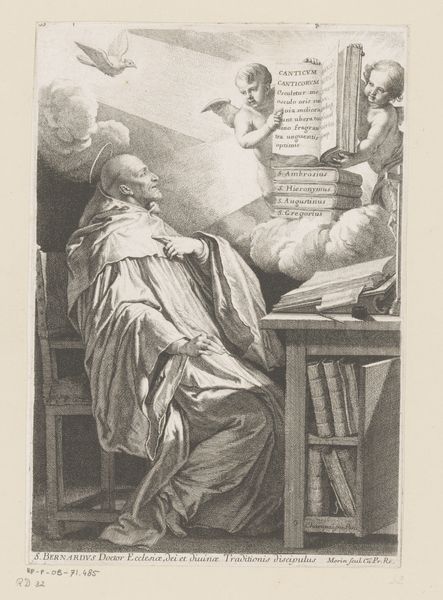
drawing, print, engraving
#
portrait
#
pencil drawn
#
drawing
#
imaginative character sketch
#
light pencil work
# print
#
pencil sketch
#
sketch book
#
figuration
#
personal sketchbook
#
idea generation sketch
#
romanticism
#
sketchbook drawing
#
genre-painting
#
cartoon carciture
#
sketchbook art
#
engraving
Dimensions: 32.5 x 24 cm
Copyright: Public domain
Curator: Delacroix’s "A Blacksmith", made in 1833, captures a sense of potent energy. What do you make of this striking engraving? Editor: I'm immediately struck by the drama in the stark contrast of light and shadow. It really emphasizes the blacksmith's muscular physique and focused expression. Curator: Absolutely. Consider the visual symbolism inherent in the figure of the blacksmith. Throughout history, he has represented creation, strength, and transformation, shaping raw materials into functional objects. The act of forging becomes an analogy for human resilience and our ability to shape our own destinies. Editor: And think about the historical context. The 19th century was a time of great industrial change, romanticized notions of labor alongside the very real hardships of working-class life. This image captures some of that tension; perhaps even a bit of idealized nostalgia for craftsmanship. Curator: Perhaps. The setting too feels important, an interior that frames the interaction with the raw and fabricated materials in what is ostensibly the world of practical labor. Do you get a sense of isolation as well? The work rendered in the near darkness certainly seems to suggest at the hard toiling labor of this figure. Editor: There is a sense of confinement, yes, despite the latent power the image exudes. I also think the relative darkness is indicative of Delacroix’s engagement with the Romantic movement which, in many ways, can be characterized as brooding on the unknown. Curator: Yes! That engagement can be found with great effect in this engraving, and even further connects the work of Delacroix to much earlier figures and movements that would have served as an inspiration to Delacroix, figures such as William Blake, or even some of the work of Henry Fuseli, all three with that same engagement in the dark brooding of human interiority. Editor: It's fascinating to consider how "A Blacksmith," made with fairly modest materials such as pencil, print and engraving could still possess this significant emotional and political punch! Curator: Precisely. I think it highlights the ability of visual symbols to connect us with deep-seated cultural and emotional narratives that endure. Editor: It gives us plenty to reflect upon about how art mediates not just ideas but also realities, perceived or otherwise.
Comments
No comments
Be the first to comment and join the conversation on the ultimate creative platform.
